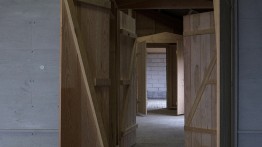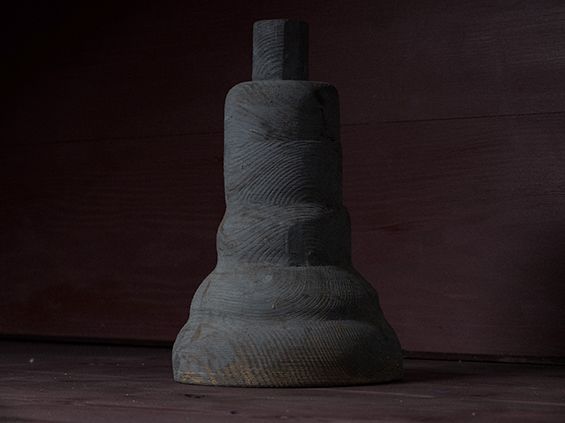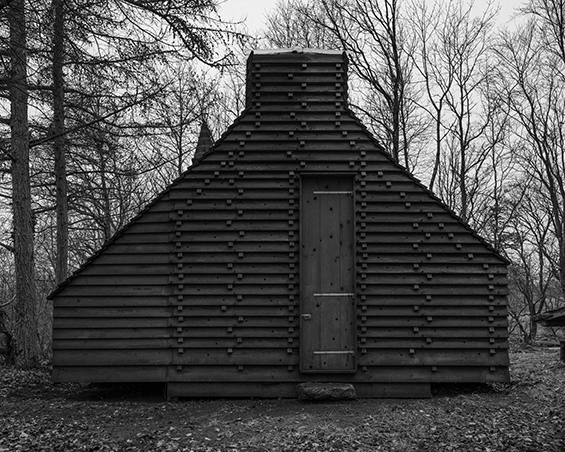It Cannot Always Be Night
POSTED ON: September 22, 2022

This project—It Cannot Always Be Night by Peter Møller Rasmussen—is the final post in a series drawn from At the Intersection of Ideas and Material Conditions, a Third Floor Hallway Gallery exhibition showcasing work by architects, researchers, and teachers at the Royal Danish Academy. The exhibition is part of an ongoing dialogue between faculty and students of The Irwin S. Chanin School of Architecture and the Institute of Architecture and Culture at the Royal Danish Academy. Faculty work from both schools was recently shown in Practices of Risk, Control, and Productive Failure, an exhibition held at the Brønshøj Water Tower in Copenhagen, Denmark from May 17 to June 10, 2022.
Of his project, Rasmussen notes:
This summer, the fourth Dinesen & Royal Danish Academy Summer School took place in the countryside of Southern Denmark. As in previous years, we added simple buildings, rooms, and programs to an abandoned farm. In time, we imagine the place will become something like a residency or a field station for the Academy, and for Dinesen—a wood floor manufacturer—a place of making and doing, a situation, a provisional school, and a place of community and strange opportunities.
The summer school is held in a rural area which, from all societal and economic perspectives, is losing its coherence. Thus, the summer school inevitably addresses questions connected with the deterioration of an old agrarian order. Losing, however, isn’t hard to master, and it has its own ambience. And frankly, on a daily basis we are not very distressed by the slow pull toward the unstable, the paltry, and the stagnant. At the very least, the level of expectation is delightfully low.
If the Danish countryside is in a crisis—just like everywhere else—it seems itself to be strangely unaware, and to whatever extent it is aware, how could such a narrative govern everyday life? Even if you are not ready for the day, it cannot always be night. (1) The practical and situated unfolding of a day, or of a two-week summer school, will inevitably present its own joys: those of creation, of collaboration, of solving smaller problems, and of the unforeseen encounter. And this joy will inevitably be directed towards—and itself directed by— what is available and near, paltry or not.
To care for a place, to be concerned with it, to dream and make plans for it, is not the necessary labor for which joy is the subsequent reward. Concern does not stand in such a transactional relation with joy. Being situated gives us this insight. In the words of Jean-Luc Nancy, “Joy knows concern, and is known by it” (2). Joy arrives, it does so on its own terms, it is not a fulfillment and it is not an eventuality to be expected, excluded, or provoked (3). The idea of joy as a reward—or of joy as the abrogation or removal of concern—belongs to a regime of transactional intentions that governs much contemporary architectural practice and discourse. It belongs to every new tourist magnet in the countryside called ‘an experience.’ It belongs to the problem-and-solution narratives that legitimize every new real estate investment project.

When we direct our attention to what is near and immediate, we lose sight of the rural crises, the economic, ecological, demographic, etc., as one-size-fits-all legitimizing narratives. Instead, they emerge as a set of highly specific material and existential limitations, inducing particular modes of concern (double edged, knowing joy and being known by it), attention to what we are bodily or materially exposed to, a need to make do with whatever is available, and a taste for the paltry and elegiac. And we need to make ourselves accustomed to strange and unfamiliar standards for value, joy, and reward. Restorative and creative intentions gradually replace transactional intentions.
What might guide us? Maybe the neighbors, who entertain us with their strange mix of anecdotes and technical details: the four sisters living in a stable; the many different qualities of hay, hewers of wood and drawers of water; their experience with tractor slippage in various compositions of clay soil; the body language of cars and the habits of eels. Maybe the neighbors, who quote both from Jan Guillou and from poets whose names are long forgotten, and who occasionally— with a gesture, dialect, or figure of speech—reveal their respect for a certain delicate and ungovernable economy of joy and concern.
1) Gwendolyn Brooks, “Speech to the Young,” from Blacks (Chicago, IL: Third World Press, 1991).
2) Jean Luc Nancy, “Shattered Love” in The Inoperative Community (Minnesota: University of Minnesota Press, 1991), p. 107.
3) Ibid., p.106.

Peter Møller Rasmussen is an architect and Ph.D. fellow at the Royal Danish Academy, Institute of Architecture and Culture. In his Ph.D. project, he examines precarity, exposedness, and uncertainty as formative forces in rural dwellings and settlements. His project examined both traditional and contemporary housing in the Danish countryside, and vernacular Georgian wooden building culture. The works shown here are the result of the Dinesen & Royal Danish Academy Summer Schools. Rasmussen organizes these schools in collaboration with Hans Peter Dinesen. The fishing hut shown here was designed in collaboration with his students, Søren Vadstrup and Christian Vennerstrøm.
Photos by Hampus Berndtson.




